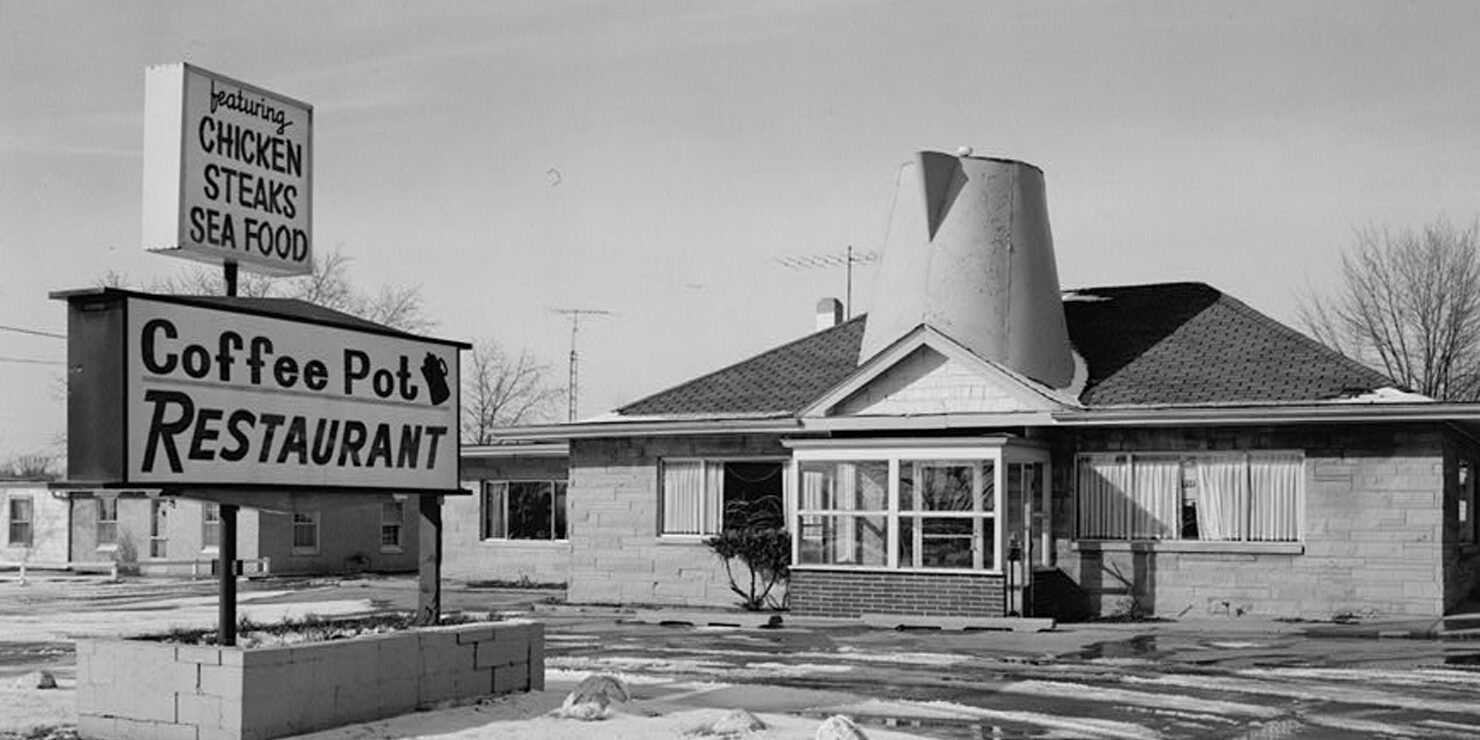The Last Days of Mexico City’s Cafes Chinos

The famous bread at Café Allende is displayed in the window. Photo by Mallika Vora
From Eater: At these working-class diners, chilaquiles sit on the menu alongside chop suey and cafe lechero. But these once-crucial footholds for Chinese immigrants are on their last legs.
I’m sitting with a giant plate of chop suey beneath the painted gaze of Martin de Porres, the Catholic saint of racial harmony. His solemnity is mocked by the smiling, rosy-cheeked baby dressed for the Chinese New Year who appears on the wall next to him. A busker walks in strumming a mournful Mexican bolero. Outside, Calle del Carmen is overflowing with vendors hawking knock-off designer purses, cheap sunglasses, and sweaters for dogs, while inside, a quiet nostalgia permeates the Cafe Goya, one of the few remaining cafes chinos (Chinese cafes) in Mexico City.
Illinois State Museum Prepares Exhibit For Centennial Of Historic Route 66, And Wants Your Contributions

From CBS Chicago: This story is both a trip back in time and a look ahead.
Historic Route 66, which of course had one of its terminal points in Chicago, turns 100 in a few years. And an Illinois museum needs your help to celebrate the milestone.
The first pieces of an exhibit in the making about Route 66 have survived decades. Holst showed Parra a detailed map of Route 66 by artist Bob Waldmire, and a solar oven the artist used.
Holst is on a treasure hunt – looking for anything that tells the story – our story – of Route 66 in the Prairie State.
Denver’s iconic Breakfast King diner closed for good. Staff say they got little notice.

Iconic Denver institution Breakfast King closed its doors for good on Jan. 3. (Jesse Paul, The Colorado Sun)
From The Colorado Sun: The King is dead.
Denver’s iconic Breakfast King diner, at the corner of South Santa Fe Drive and Mississippi Avenue, closed its doors for good Monday, longtime server Lori Prien confirmed.
“My boss called me yesterday and said not to come in because we’re closing up shop,” said Prien, who has worked at the eatery since 1989. “I’m in shock. I’m 55 years old – I don’t want to start at another restaurant.”
Opened in 1975, Breakfast King often landed on local “Best Of” lists for its vintage decor, wood-paneled dining room, orange vinyl booths and voluminous menu featuring Greek, Mexican and American food.
Maine artist of five decades is enjoying a moment in the spotlight

From News Center Maine: PORTLAND, Maine — When he was growing up in Lewiston-Auburn and then Brunswick in the 1950s, Charlie Hewitt liked to read one of the most popular magazines of the era. It provided him with news, entertainment, and even inspiration that set him on the path to becoming a professional artist.
“Where I got my visual arts from was ‘The Saturday Evening Post,’ he said. “That was a big night. When Saturday came, you got ‘The Saturday Evening Post’ with the cover.”
Many of them were drawn by the great illustrator Norman Rockwell. Those enormously popular covers got him thinking about something particular: how ideas were transformed into images.
After more than five decades as a painter and sculptor, Hewitt, who lives in Yarmouth and has a studio in Portland, is enjoying a moment.
A sculpture he created, a neon sign that says “Hopeful,” has caught on in ways he never expected. First erected on the roof of a building on a busy stretch of Forest Avenue in Portland, it has spawned similar signs in Bangor, Lewiston, Brunswick, and more than a dozen other places around the country, including outside the Lincoln Tunnel in New Jersey.
The Campy History Of Giant Roadside Coffee Pots

Historic American Buildings Survey (Library of Congress)
From Sprudge.com: Imagine yourself speeding along the highway and catching sight of a giant coffee pot poking its spout out of the ground. In the 1930s, chances are that it was a functioning cafe. Today, it’s more likely to be a historical icon worth stopping at.
I’ve written about miniatures before so it makes sense to u-turn for the opposite end: gigantic, towering coffee pots. I’m talking about a two-story coffee pot that if real and working, could hold 819,000 cups of coffee, but instead it houses a restaurant on the ground floor and an apartment on the second.
Bedford, Pennsylvania’s Koontz Coffee Pot is an excellent existing example of programmatic or mimetic architecture: buildings that look like other things. These buildings, along with nonfunctional giant items and interesting signs, are all housed under the general “roadside architecture” umbrella. Roadside architecture was born in the US in the early 20th century after cars became more affordable, cross-country highways were built, and the traffic traveled faster.


